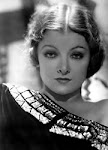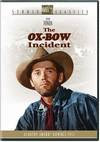The Mark of Zorro
The Scarlet Pimpernel
Spiderman
Americans have enjoyed a love affair with heroes in disguises since colonialists dressed up like Native Americans to attend the original Boston Tea Party. So its no wonder that masked heroes have be portrayed in the cinema since its beginning – and especially the past several years. The films discussed here were chosen because they are excellent representatives of a genre is exciting, romantic and appeals to our collective definition of morality.
I begin with The Mark of Zorro (released in 1920 in black and white). Zorro is one of the most cinematically portrayed figures in history. The only ones that I can think of that may rival Zorro are the British spy James Bond and the Chinese detective Charlie Chan. I should also add that my favorite Zorro portrayers are Antonio Banderas in the 2002 version and its sequels, and George Hamilton in Zorro, The Gay Blade – which is an absolute pleasure to watch because of its witty and uproariously hilarious dialogue. But I am using the silent movie in this discussion to help make my point about the endurance of this popular character.
The plot of this movie is simple. Don Diego Vega, the son of an aristocratic family, returns from Spain, where he attended school, to Los Angeles at a time when California was still part of Mexico. The governor of the area is a tyrant named Alvarado, who can’t seem to control his need to tax the peasants under his authority. Don Diego, who became an accomplished swordsman in Spain, decides he needs to do something to end the tyranny. So, he dons a mask and black cape, names his alter ego Zorro, and proceeds to disrupt Alvarado’s power-crazed plans. No one knows Zorro’s identity except his servant Bernardo. And to further confuse the authorities – and protect his family – Don Diego takes on an effeminate persona. The one problem with Don Diego’s plan is that he falls in love with the daughter of another aristocratic family, Lolita. However by film’s end – and after lots of swashbuckling – Zorro forces Alvarado to give up his office and reveals his true identity to his happily surprised beloved.
The Scarlet Pimpernel (1935, b&w) uses a similar element as the previous film. Although set in France and England during the French Revolution, the hero also uses an effeminate persona in his daily role as Englishman Sir Percy Blakeney. However, unlike Zorro, The Scarlet Pimpernel doesn’t wear a mask but rather uses wigs, makeup, phony noses and other theatrical trappings to save French noblepersons from the Guillotine. Additionally, is interesting to note that there was a previous version of the story filmed during the silent era.
This movie’s plot is much more complicated than the Mask of Zorro storyline. The Scarlet Pimpernel has a network of assistants in both France and England, but his true identity is kept secret from most of the world – including his wife, French-born Lady Marguerite Blakeney, nee St. Just, and the Prince of Wales, who seeks Sir Percy’s advice on clothing despite calling the faux fop “spineless, brainless and useless.” And one thing I particularly like about this story is that Sir Percy augments his fake identity by composing a poem about the Scarlet Pimpernel:
"They seek him here. They seek him there.
Those Frenchies seek him everywhere.
Is he in heaven? Is he in hell?
That damned elusive Pimpernel."
But back to the main plot: Sir Percy and Lady Marguerite are unhappy with each other even though they do love each other. The problem arose when Sir Percy found out that Lady Marguerite played a role in the death of a French nobleman, not realizing that his wife was tricked into it. But apparently, that is what sparked Sir Percy to don the Pimpernel persona. He felt guilty that his wife had a hand in that treachery. And for her part, Lady Marguerite was annoyed at the foppish behavior of her husband – which he hadn’t displayed at the beginning of the marriage.
Then the man who betrayed Lady Marguerite’s trust – Monsieur Chauvelin, a French spy working in England – shows up at the Blakeney estate seeking her help in identifying the Scarlet Pimpernel. Although Lady Marguerite initially refuses, Chauvelin has proof that her brother, who unbeknownst to her is a member of her husband’s secret network, is a traitor to France. The spy threatens to have the brother killed unless Lady Marguerite does as she is told. Chauvelin eventually suspects that Sir Percy is the Pimpernel and returns to France to set a trap for him.
Before leaving on his next rescue mission, Sir Percy and Lady Marguerite discuss their rocky relationship and the wife, still in the dark about her husband, admits she has again helped Chauelin to save her brother. She also explains how she was tricked by Chauvelin the first time. Then after Sir Percy has left, Lady Marguerite discovers her husband’s secret. She and the English side of the Pimpernel network sail to France to warn her husband, but Chauvelin already knows where the Pimpernel plans to rendezvous with the ship that will take him back to England. Lady Marguerite arrives first, Chauvelin shows up and captures her and Sir Percy apparently walks into the trap. But, although Sir Percy wasn’t expecting his wife’s presence, it turns out that Chauvelin is the one who walks into the trap – and the happy couple returns to England.
I decided to add a comic book character to this discussion because of the popularity the genre has enjoyed since the mid 20th Century. And I chose Spiderman (2002, color) because he was my personal favorite. Also, I’m a big Marvel Comics fan because, in my opinion, its characters deal with the kind of everyday problems we all have and they are more introspective than the characters in D.C. Comics.
Peter Parker is a science whiz kid who lives with his Aunt May and Uncle Ben in New York City. His biggest concerns are keeping his grades up, trying to find a way to attract the interest of Mary Jane Parker, making time to hang out with Harry Osborn, his best friend, and working as photographer on his school’s newspaper. During a field trip to a science lab, he is bitten by a radioactive spider and develops arachnid-like powers that include “spider sense” – the ability to perceive danger just before it strikes. Although he decides to create a Spiderman outfit to hide his identity, he initially treats his newfound powers rather frivolously.
Coincidentally, Uncle Ben, who along with Aunt May does not know about Peter’s super powers, lectures his nephew about people’s obligation to society, telling him that “with great powers come great responsibility.” Then one day, Uncle Ben is killed by hoodlums who Peter had previously encountered and ignored. That’s when Peter decides that Spiderman would become a crime fighter. And because his uncle is no longer living, Parker decides to take a job that actually make money. So, he becomes a photographer for the Daily Bugle, a newspaper owned by J. Jonah Jamison – who uses his forum to denounce all super heroes, especially Spiderman. Jamison hires Peter because the photographer always manages to get exclusive photos of Spiderman. Gotta love the irony.
Peter also has great respect for Harry’s father, Norman Osborn, who is a noted scientist. But one of Osborn’s experiments goes haywire, giving him super powers as well – and driving the scientist insane. Osborn then develops an alter ego known as the Green Goblin and proceeds to wreak havoc throughout the city. Spiderman, who is aware of the Green Goblin’s identity, battles the crazed scientist and ultimately defeats, as in kills, him – something Peter hoped to be able to avoid.
Like the previously discussed main characters Spiderman recognized that a wrong was being committed an he took it upon himself to do something about it. I know that this may sound like these guys are vigilantes, the kind of people I warned about in previous writings. But there is one big difference: Zorro, The Scarlet Pimpernel and Spiderman were not acting out of revenge, but rather out of a sense duty and responsibility for their fellow human beings.
Of course, many of history’s masked men have been bad guys who have robbed banks, trains, stage coaches and individuals. And some of these bad guys have hid behind masks and hoods to perpetrate unspeakable evil against people that were wrongly deemed dangerous or just because the bad guys were attracted to cruelty. But the masked and disguised good guys of the cinema have earned our undying affection and filled us with hope that when we are in need of help, there is always the possibility that some real unknown hero will come to our aid.
Friday, March 27, 2009
Subscribe to:
Post Comments (Atom)






























































No comments:
Post a Comment